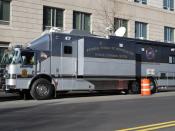IntroductionIn order to identify the unique characteristics of the criminal's personality a process is followed which is known as criminal profiling. Criminal profiling plays a crucial and significant role in deterring and combating criminal behavior and activity. This process is used to evaluate and investigate criminal activity by adopting a proactive and dynamic approach. Criminal profiling provides a valuable tool for law enforcement agencies in which they can assess and analyze the patterns of criminal behavior (Turvey, 2008). The aim of this research paper is to investigate the effectiveness of criminal profiling in Minneapolis, Minnesota.
BackgroundCriminal profiling is done by the behavioral Science Unit of Federal Bureau of Investigation (FBI). This unit is responsible to study and investigate the behavior of the criminals through different techniques and procedures. The FBI in the Minneapolis is of average size as compared to the other offices in the country. The FBI from many years is working in Minneapolis.
A number of steps are conducted in order to properly conduct criminal profiling. The first step is the profiling input which is important for profiling. After that the input is arranged and organized in a systematic and methodical manner. The third step consists of crime assessment in which the patterns of offenders and victims behavior are reconstructed. The next stage consists of criminal profile in which the above steps are observed to develop and describe the behavior of the criminal, background information, characteristics and beliefs of the criminal. The final process consists of investigation process and apprehension in which a review is conducted in order to arrive at correct and appropriate conclusions and deductions (Swanson, Chamelin & Territo, 2008).
Criminal Profiling in MinneapolisThe Behavioral Science Unit of FBI of Minneapolis works to find out the criminals in order to stop crimes and attacks. The Behavioral...


